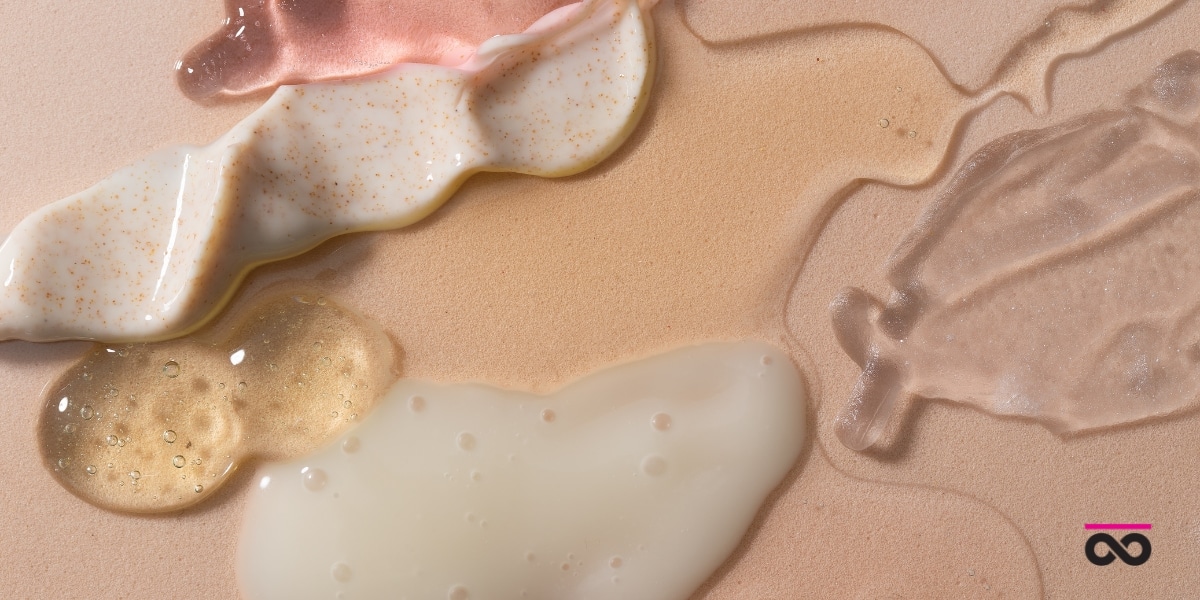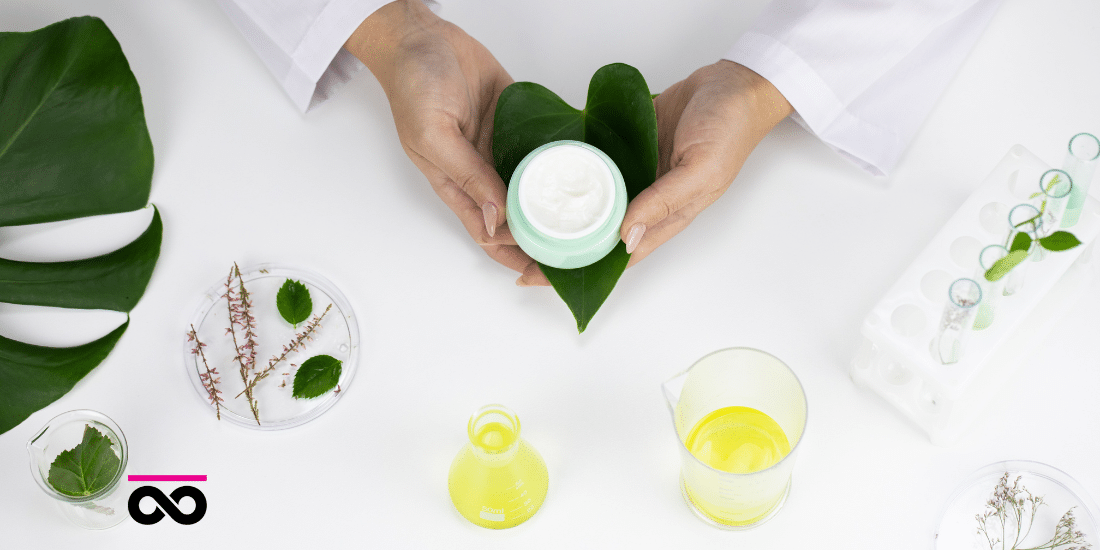INCI Names Decoded: Understanding Natural Skincare Ingredients
Cracking the Code: Skincare Ingredients - From INCI Nightmares to Beauty Dreams!

When it comes to skincare products, there's an alphabet soup of ingredients that can leave even the most seasoned beauty enthusiasts scratching their heads. INCI names—those long, scary, scientific-sounding labels on the back of your favorite skincare products—often appear more like a chemistry experiment gone awry than a recipe for glowing skin. But fear not! Behind those intimidating names lie some of nature's most powerful allies for healthy, radiant skin.
In this blog, we'll delve into the world of skincare ingredients and shed light on how INCI names can appear daunting but are perfectly safe.

INCI ...What??
INCI stands for International Nomenclature of Cosmetic Ingredients. It was created in the 1970’s as a standardized “naming” system to identify ingredients in cosmetics and personal care products. The INCI names are based on the scientific name, Latin or English words, ensuring that the ingredient names are consistent across international borders and recognizable to regulatory authorities. These “official” names are listed on product labels in order of concentration in the formula, with ingredients used at 1% or below listed in any order.
Interesting side-note: According to the Personal Care Product Council, the International Nomenclature Committee created 797 new INCI names in 2023, adding to the current list of more than 30,000 INCI names.
This will only continue to grow due to the addition of exotic botanicals, innovative actives, and unique sensorial ingredients. It is such an exciting time to be a formulator - so many amazing ingredients with luxurious benefits!

Mythbusters
Misconceptions about INCI names abound, primarily due to their scientific and sometimes intimidating nature. A few common misconceptions are:
Complexity Equals Harmfulness: Many people assume that the more complex an INCI name sounds, the more likely it is to be harmful or synthetic. However, this isn't necessarily true. As mentioned above, complex-sounding names often originate from scientific terminology or standardized naming conventions and may represent natural ingredients or derivatives thereof.
All Chemical Names Are Harmful: There's a misconception that anything with a chemical-sounding name must be bad for you. However, everything, including water (H2O) and oxygen (O2), has a chemical name. Many skincare ingredients with complex INCI names are derived from natural sources or are synthetically produced versions of natural compounds, both of which can be beneficial for the skin.
Natural Ingredients Have Simple Names: While some natural ingredients indeed have simple names (e.g., water, Shea butter), others have complex INCI names derived from their Latin or botanical origins. For example, "Butyrospermum Parkii Butter" is the INCI name for Shea butter, and "Sodium Cocoyl Isethionate" is derived from coconut oil.
INCI Names Are Unfamiliar and Untrustworthy: Some consumers may feel wary of ingredients they're not familiar with, assuming that if they can't pronounce or recognize an INCI name, it must be untrustworthy or unsafe. (In all honesty…I can’t pronounce many of the names!!). However, unfamiliarity doesn't necessarily equate to harm. Many beneficial skincare ingredients have complex INCI names but are thoroughly researched and deemed safe for use in cosmetic products.
All INCI Names Represent Single Ingredients: Sometimes, an INCI name might appear complex because it represents a compound or a mixture of ingredients rather than a single component. For example, "Linalool" might sound like a standalone ingredient, but it's actually a naturally occurring compound found in essential oils like lavender and bergamot.
INCI Names Are Just Confusing Jargon: While it's true that INCI names can be confusing to consumers unfamiliar with scientific terminology, they serve a crucial purpose in standardizing ingredient lists and promoting transparency in the cosmetics industry. Understanding these names allows consumers to make informed choices about the products they use and enables them to identify potential allergens or irritants.

Don't Judge a Product By Its INCI
While INCI names may sound intimidating at first glance, it’s important to understand them and that they're simply the scientific names for common skincare ingredients. Think of them as the Latin names for plants in a botanical garden—they might seem daunting, but they're just a fancy way of identifying familiar friends.
Just because an ingredient has a complicated name doesn't mean it's harmful or synthetic. Many skincare ingredients with intimidating INCI names are derived from natural sources and offer numerous benefits for the skin. For instance, “Tocopherol Acetate” might sound like a chemical concoction straight out of a lab, but it’s actually a form of Vitamin E that helps moisturize the skin and protect it from environmental damage!
A few other common examples include:
Sodium Hyaluronate: This mouthful of a name might sound like a harsh chemical…but it's actually a salt form of Hyaluronic Acid, a hydrating powerhouse for the skin. It helps to retain moisture, resulting in plump, supple skin.
Retinyl Palmitate: Another seemingly intimidating name, Retinyl Palmitate, is a gentle form of Vitamin A. It's often used in skincare products for its anti-aging properties, helping to improve skin texture and reduce the appearance of wrinkles.
Ascorbyl Tetraisopalmitate: This INCI name might make you do a double-take, but it's just a stable form of Vitamin C. Ascorbyl Tetraisopalmitate is prized for its antioxidant properties, which help to brighten the complexion and protect against environmental damage.
Cocos Nucifera Oil: No need to panic when you see this name on an ingredients list—it's just Coconut Oil! Coconut Oil is celebrated for its moisturizing abilities and is often used in skincare products to hydrate and soothe the skin.
INCI names allow you, as the consumer, to research and make informed decisions about the products you use. Before falling prey to the plethora of misinformation on social media or any other non-credible source, empower yourself with the knowledge by utilizing the numerous online (credible) resources available, such as SpecialChem or the more consumer-friendly INCIDecoder. By understanding specific ingredients, their benefits, and potential allergens, you can make informed decisions about which products will work best for your skin.

The Takeaway
So just remember, while skincare ingredient lists can sometimes appear daunting, it's essential not to judge a product solely on its INCI names – instead, approach them with an open mind and a willingness to learn. Some of the most powerful skincare ingredients have long and complex INCI names – many of which are derived from natural sources and offer a wide range of benefits for the skin.
Behind every complex label lies a world of possibility—a world where radiant, healthy skin is within reach. Embrace the mystery, and let your skincare journey unfold with joy and curiosity. Your skin will thank you for it.
In upcoming blogs, we will take a deep-dive into some of our favorite natural and naturally derived ingredients that you may not readily know by name...INCI, that is! Be sure to subscribe to our newsletter to stay in-the-know!
The artisan-created bath & body skincare collections from Taboodoir are uniquely designed to transform your everyday routine into moments of indulgent self-care. Shop online today or contact us for more information.
Disclaimer: The content provided here is for informational purposes only. This blog is not intended to substitute for medical advice, diagnosis, or treatment. Always seek the advice of a qualified healthcare provider for any questions or concerns you may have regarding a medical condition.

